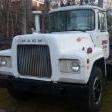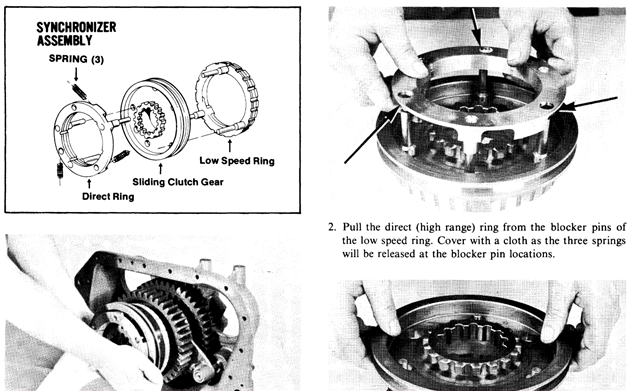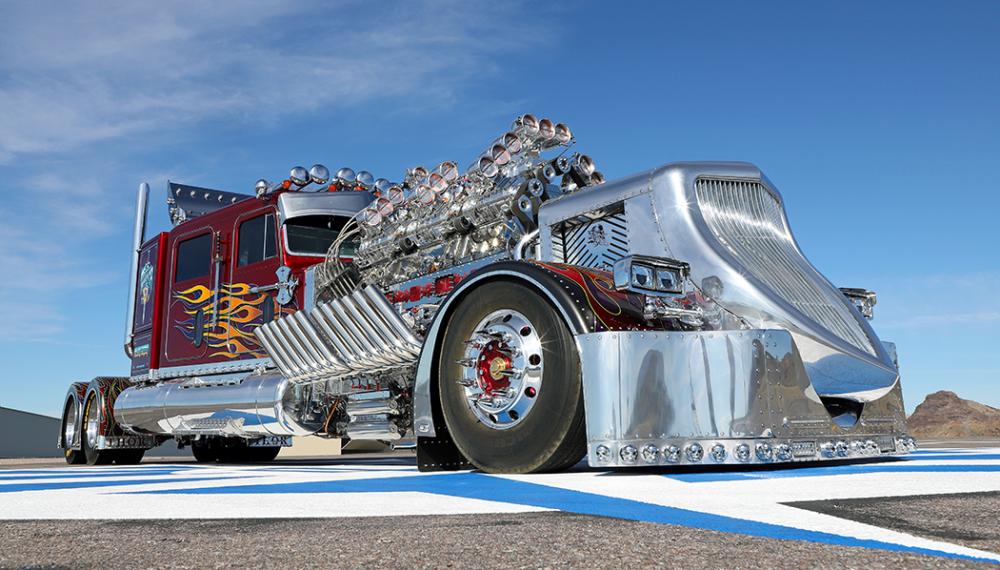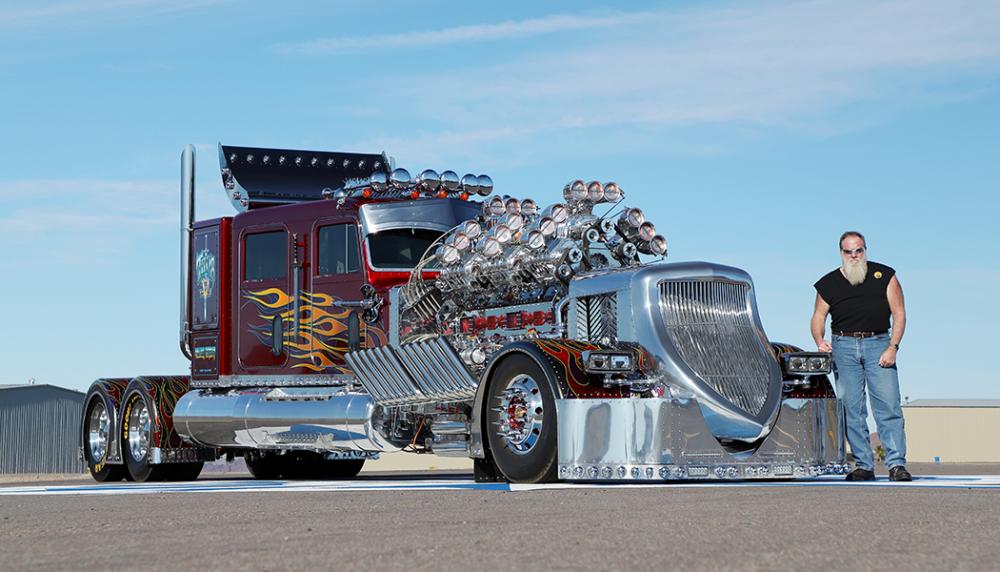-
Posts
2,618 -
Joined
-
Last visited
-
Days Won
37
Content Type
Profiles
Forums
Gallery
Events
Blogs
BMT Wiki
Collections
Store
Everything posted by doubleclutchinweasel
-
Stumbled across this link. Free download. Might help somebody??? http://www.taurusfleetservices.com/images/MackService/Mack-T313-T318-Service.pdf And, then there's these guys... https://www.globaldrivetrainparts.com/transmission-manuals
-
- 2
-

-

Front End shakes while braking
doubleclutchinweasel replied to BucketTrucker688's topic in Driveline and Suspension
Anybody ever hear whether or not he got this problem sorted out??? -

Newer Trucks With Spoke Wheels
doubleclutchinweasel replied to Bobby Tonerz's topic in Other Truck Makes
And, maybe more importantly... Another one of my pet peeves...the mirrors are on that truck the "right" way! LOL!!! -

Newer Trucks With Spoke Wheels
doubleclutchinweasel replied to Bobby Tonerz's topic in Other Truck Makes
I was talking about posts I have read where some expert declared that all 2-piece and 3-piece rims were "illegal" now. That's all. The 2-piece, as far as I know, are no longer manufactured...whether by law or by good judgement! But, the 3-piece design is still in production. Just trying to differentiate the two designs. Not advocating either! Not trying to stir anything up! Sorry, Bob! -

Newer Trucks With Spoke Wheels
doubleclutchinweasel replied to Bobby Tonerz's topic in Other Truck Makes
It's sad that there is still confusion about the different styles of multi-piece rims. I have heard lots of people talk about those 3-piece rims in the same sentence with the 2-piece rims, and about dangerous they are. The 2-pice rims ARE crazy-dangerous. But, the 3-piece design is not a problem. In fact, they are still being manufactured and sold today. From an engineering standpoint, that 3-piece design is actually very sound. Not so with the old 2-piece. I spent a winter working in Frankfort, KY at a "Hot Rocks" (i.e.: Firestone) dealer. That was quite an experience! Nothing like being a tire-buster to make you appreciate ... pretty much any other job! LOL! Actually, I did rather enjoy the work. Mostly, it was the customers who made it unpleasant (at times). I remember the day that an irate customer backed over the shop manager while leaving the shop. One day, a snow storm hit, and another guy and I spent all day studding snow tires. I think that;s the day I decided to go back to clearing right-of-way! -

Newer Trucks With Spoke Wheels
doubleclutchinweasel replied to Bobby Tonerz's topic in Other Truck Makes
That looks like it has the 3-piece rims on it. We talked about those in another thread recently. Pretty good-looking truck. Thanks for posting! -
I like the problems you are having...trying to figure out which BB to use! LOL! Awesome problem! Awesome pile of parts there, too! Back when the world was young, and so was I, we didn't get to hod-rod our Macks. But, we got to play with the Chevys a lot. I always liked the 427, IF the valve train was up to snuff. The 427 could wind up pretty good, but the valve train needed serious pieces to stand the RPM. Great HP potential. I usually preferred the 454 in a street car. The lower RPM range and the added torque felt better in the seat-of-the-pants dynamometer! And, that lower RPM range put a lot less stress on the valve train. I believe the 454s were externally balanced, right? I have particularly fond memories of a 427-powered '70 Nova and of a 454-powered '69 Camaro that belonged to a couple of my friends. Those guys went at each other all the time, and pretty much split the win/loss columns. I fixed a LOT of broken parts for those 2 guys. All the BBs have a coolness to them. I look forward to seeing what happens. Nomads are killer. God luck, and happy motorin'!
-

What is this?
doubleclutchinweasel replied to h67st's topic in Antique and Classic Mack Trucks General Discussion
Shut off makes sense. Appears to only have 1 in and 1 out. So it didn’t look like a feeder for anything. Spring was probably put on to hold it open after the operating cable broke and left somebody cussing on the side of the road! -
Great post. I remember having to polarize regulators on old VWs I worked on as a kid. Couldn't have recited that from memory now, though, if my life depended on it! Thanks, Larry.
-
I remember the (new) L-series stuff from when I was young. They were pretty cool for the day. The visibility was better than a lot of other trucks Lots of powertrain options. I remember one detail from their literature talking about all the gauges being at 3 o'clock (or something like that) when everything was right with the world. Seemed like a nice venture into what we now would call "ergonomics".
-

What is this?
doubleclutchinweasel replied to h67st's topic in Antique and Classic Mack Trucks General Discussion
Great description of the lubricator. I can't see the point of this one either though. Would like to know if anybody figures it out! -
newer brakes canisters use a 2-chamber design. One has a diaphragm which uses compressed air to actuate the brake. The other chamber has a diaphragm with air going to one side and a compression spring on the other side. This second chamber is the parking/emergency brake. The 2nd diaphragm is pushed down to release by pressing the release valve in the cab. If the air pressure drops, the spring will automatically apply the brake. These brake units typically have a "caging" bolt which allows you to manually compress the spring and release the emergency/parking brake. Many older trucks had "DD3" brake cans. these were a Dual Diaphragm 3 function (service, park, and emergency) piece. Get it...D-D-3? They had roller-locking devices in them, and a "reserve" air tank, along with a host of plumbing and an "inversion valve". If these locked, there was an override valve in the cab that you could push in which would dump air to the release side to allow the truck to move off the road before that tank was exhausted. Seems like you had to hold the valve in and apply the brakes via the pedal to get the piston to disengage from the roller locks. Couldn't get far, but maybe off the railroad tracks! Even older stuff, including a lot of original B-models, had a simple lever-operated parking brake around the driveshaft. Of course, lots have been upgraded over the years. I do not know what system you have. So, it kinda depends on how your truck is currently set up as to exactly how you can override the brakes. I took the DD3 stuff off my old R600 and upgraded it to the modern spring brake design. Worked better, and gave me the "caging" bolt option, just in case. Anyway, I trust you got it home okay, and are well on your way to getting it sorted out. Lots of people on here will help, once they know what you have to work with. Oh, and welcome!
-
Ciao!
-
I do not know the Mack version. But, I have been into a RoadRanger or two. The hi-lo synchro unit has teeth in it that engage the mainshaft. If these get worn too badly, they can try to disengage when you let off the throttle. Not sure how the Mack units work. But, it sure sounds like something in that area, especially if all is well in lo range. Of course, you did not specify if the hi-lo appeared to be going into neutral or if the actual shift lever is going into neutral. But, from your wording, I assumed you meant the shift lever did not move.
-
Good info, Larry.
-

What is this?
doubleclutchinweasel replied to h67st's topic in Antique and Classic Mack Trucks General Discussion
Huh! Did not know that. But, diesel fuel would be a pretty good cleaner/lube for an air motor, I suppose. Learns something new every day... Thanks, Bob -
I think it's okay to research thoroughly before tearing into stuff. I do a lot of research on anything I do. Sounds like you have LOTS of options to work with. I particularly like the option of using it for "lawn art"! That fits in with my comment on deciding if you want to work on it or not. Sometimes, it just isn't what you want to do right now. The main reason I sold my R is that i was at a point that I did not want to spend more time and money on that project...right at that time. Stick around. You'll have lots of fun on this forum. Don't take anyone's comments too personally. Lots of these guys know more about these things than the rest of us put together. So, there is a lot of good info on here. But, we are all individuals, too. So, individual personalities will be seen, too. And, sometimes somebody may come across a little strong. But, for the most part, there intentions are good, and they really do try to help. Just my two cents...
-

What is this?
doubleclutchinweasel replied to h67st's topic in Antique and Classic Mack Trucks General Discussion
Uses fuel for lubrication? Just asking. -
Anybody remember this thing??? https://www.tenfourmagazine.com/2020/03/cover-features/holy-mother-of-metal/nggallery/slideshow
-

Front End shakes while braking
doubleclutchinweasel replied to BucketTrucker688's topic in Driveline and Suspension
Well? Did you get it? -

What is this?
doubleclutchinweasel replied to h67st's topic in Antique and Classic Mack Trucks General Discussion
Nope! But you certainly got me interested! -
Sounds logical to me. That one valve might have something keeping it from closing completely. 1/8" is a mile in an engine. If it is not closing completely, then you would get the exact symptoms you are describing. Everything would turn until that piston neared TDC, and then it would hit that valve. Could be corrosion or rust on the valve stem. Could have a lump of crap on the valve seat. You might be able to bring the piston up near (but not too close to) TDC (to keep you from dropping the valve into the cylinder), remove the keeper and spring, and move the valve around by hand to see if you could free-up or dislodge anything. WARNIING: it can be a bear to get the spring back on, though. So, be forewarned. On a gas engine, we would pressurize the cylinder through the spark plug hole to hold the valve closed. Not sure if you could pressurize this one through the injector hole or not. I once freed a partially-open valve that had some gunk on the stem by spraying penetrating oil down the stem and tapping the valve lightly with a rubber mallet (with the spring still on it). It would originally move down easily, but would not come all the way back up. After a few soaks and taps, it finally came all the way back up. But, this one had only very minor crud on the stem. The seat was clean. It had the same symptoms; the crank would turn until the piston touched that valve, and then it stopped cold. If you can't do anything from the top, then, like the man said, you have to decide if you want to play in this league. It ain't cheap.
-
I thought I was a little out of focus!
BigMackTrucks.com
BigMackTrucks.com is a support forum for antique, classic and modern Mack Trucks! The forum is owned and maintained by Watt's Truck Center, Inc. an independent, full service Mack dealer. The forums are not affiliated with Mack Trucks, Inc.
Our Vendors and Advertisers
Thank you for your support!







